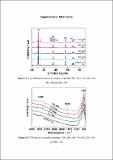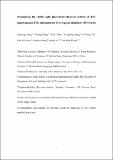Files in this item
Maximizing the visible light photoelectrochemical activity of B/N-doped anatase TiO2 microspheres with exposed dominant {001} facets
Item metadata
| dc.contributor.author | Hong, Xingxing | |
| dc.contributor.author | Kang, Yuyang | |
| dc.contributor.author | Zhen, Chao | |
| dc.contributor.author | Kang, Xiangdong | |
| dc.contributor.author | Yin, Li-Chang | |
| dc.contributor.author | Irvine, John T. S. | |
| dc.contributor.author | Wang, Lianzhou | |
| dc.contributor.author | Liu, Gang | |
| dc.contributor.author | Cheng, Hui-Ming | |
| dc.date.accessioned | 2019-03-15T00:38:02Z | |
| dc.date.available | 2019-03-15T00:38:02Z | |
| dc.date.issued | 2018-06 | |
| dc.identifier | 252738071 | |
| dc.identifier | f1e78c25-d781-490d-b60a-387ed610ab0c | |
| dc.identifier | 85045027099 | |
| dc.identifier | 000432687500005 | |
| dc.identifier.citation | Hong , X , Kang , Y , Zhen , C , Kang , X , Yin , L-C , Irvine , J T S , Wang , L , Liu , G & Cheng , H-M 2018 , ' Maximizing the visible light photoelectrochemical activity of B/N-doped anatase TiO 2 microspheres with exposed dominant {001} facets ' , Science China Materials , vol. 61 , no. 6 , pp. 831-838 . https://doi.org/10.1007/s40843-018-9234-y | en |
| dc.identifier.issn | 2199-4501 | |
| dc.identifier.other | RIS: urn:EC8939D91098BC60FC7834E707E8A3DB | |
| dc.identifier.other | RIS: Hong2018 | |
| dc.identifier.other | ORCID: /0000-0002-8394-3359/work/68280736 | |
| dc.identifier.uri | https://hdl.handle.net/10023/17291 | |
| dc.description | This work was supported by the Major Basic Research Program, Ministry of Science and Technology of China (2014CB239401), the National Natural Science Fundation of China (51422210, 21633009, 51629201 and 51521091), the Key Research Program of Frontier Sciences CAS (QYZDB-SSW-JSC039). Liu G thanks Newton Advanced Fellowship. | en |
| dc.description.abstract | Anatase TiO2 microspheres with exposed dominant BBBBB001BBBBB facets were doped with interstitial boron to have a concentration gradient with the maximum concentration at the surface. They were then further doped with substitutional nitrogen by heating in an ammonia atmosphere at different temperatures from 440 to 560°C to give surface N concentrations ranging from 7.03 to 15.47 at%. The optical absorption, atomic and electronic structures and visible-light photoelectrochemical water oxidation activity of these materials were investigated. The maximum activity of the doped TiO2 was achieved at a nitrogen doping temperature of 520°C that gave a high absorbance over the whole visible light region but with no defect-related background absorption. | |
| dc.format.extent | 8 | |
| dc.format.extent | 1550801 | |
| dc.format.extent | 377193 | |
| dc.language.iso | eng | |
| dc.relation.ispartof | Science China Materials | en |
| dc.subject | Photoelectrochemistry | en |
| dc.subject | Red TiO2 | en |
| dc.subject | Water splitting | en |
| dc.subject | Doping | en |
| dc.subject | QD Chemistry | en |
| dc.subject | NDAS | en |
| dc.subject | SDG 7 - Affordable and Clean Energy | en |
| dc.subject.lcc | QD | en |
| dc.title | Maximizing the visible light photoelectrochemical activity of B/N-doped anatase TiO2 microspheres with exposed dominant {001} facets | en |
| dc.type | Journal article | en |
| dc.contributor.sponsor | The Royal Society | en |
| dc.contributor.institution | University of St Andrews. School of Chemistry | en |
| dc.contributor.institution | University of St Andrews. EaSTCHEM | en |
| dc.identifier.doi | https://doi.org/10.1007/s40843-018-9234-y | |
| dc.description.status | Peer reviewed | en |
| dc.date.embargoedUntil | 2019-03-15 | |
| dc.identifier.grantnumber | NA140077 | en |
This item appears in the following Collection(s)
Items in the St Andrews Research Repository are protected by copyright, with all rights reserved, unless otherwise indicated.


